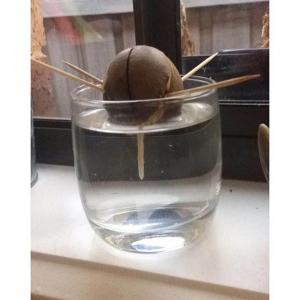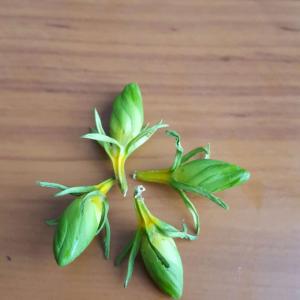文章
Alicia
2017年05月22日

Learn about the companion plants for carrots. Carrot companion planting plays a helpful role in the growth of carrots.
If planted together, carrot companion plants help in improving taste, attracting beneficial insects (pollinators) or repelling pests away. In addition, the use of such plants in combination allows a rational use of space in the garden and decrease the use of pesticides.

Carrot Companion Planting
Here are some plants that are advantageous to grow together (on adjacent rows or alternately in the same) with carrots to stimulate its growth: You can grow beans, peas and other legumes with carrots. Salad greens, bokchoi, lettuce or the plants that belong to cabbage family are good companion plants for carrots.
Sowing radish seeds together with carrot seeds is good for carrot’s growth. Radishes germinate quickly and help in germination of carrots. Also, they are harvested earlier than carrots and when rooted out, they make room for carrots to grow.
Tomatoes can be planted with carrots. Chives, onion, leek and garlic are good companion plants too, they also keep the pests like carrot flies away.
In herbs, you can grow sage, parsley and rosemary with carrots.
Foes
If planted together, carrot companion plants help in improving taste, attracting beneficial insects (pollinators) or repelling pests away. In addition, the use of such plants in combination allows a rational use of space in the garden and decrease the use of pesticides.

Carrot Companion Planting
Here are some plants that are advantageous to grow together (on adjacent rows or alternately in the same) with carrots to stimulate its growth: You can grow beans, peas and other legumes with carrots. Salad greens, bokchoi, lettuce or the plants that belong to cabbage family are good companion plants for carrots.
Sowing radish seeds together with carrot seeds is good for carrot’s growth. Radishes germinate quickly and help in germination of carrots. Also, they are harvested earlier than carrots and when rooted out, they make room for carrots to grow.
Tomatoes can be planted with carrots. Chives, onion, leek and garlic are good companion plants too, they also keep the pests like carrot flies away.
In herbs, you can grow sage, parsley and rosemary with carrots.
Foes
0
0
成长记
Lauren
2017年05月08日

10 weeks of growth on my Avo seed! Its almosy ready to stem!#Avocado






1
0
FieryFlame:@Lauren thanks 😁😁
Lauren:@FieryFlame I literally just leave it alone! It sits in my windowsill where it gets some light and heat, and when I remember I top up the water in the glass to make sure the bottom is always submerged! Make sure you dry the seed out for a few days before putting it in the water and that the top half is out of the water!
FieryFlame:How did you do it? I have never got any success yet, all ended rotten
lrgarden:cool
成长记
Hong Lam
2017年04月01日

So Penelope has dropped some buds because I was dumb and bad :<
BUT on the flip side, she has quite a few more but much smaller buds that have survived. Maybe a later summer bloom? maybe she'll have a sudden growth spurt? I just want a bloom, dammit ;_;

BUT on the flip side, she has quite a few more but much smaller buds that have survived. Maybe a later summer bloom? maybe she'll have a sudden growth spurt? I just want a bloom, dammit ;_;

0
0
文章
Lisa
2017年02月18日

By adding manure in your lawn you can create a lush green field. Of course, fertilizers are more effective though using them harm your soil and if over applied burns the grass, too.
But manure as a fertilizer supports the growth of grass. It’s rich in nitrogen and an organic and safer option than conventional fertilizers. It aids our ecosystem and adds micronutrients in soil too.

1. Put the dried manure in a large container, using hand rake break the large pieces into similar small dusty or gravel like pieces.
2. Pour that manure into the fertilizer spreader’s hopper, remove bigger clumps that are not broken similarly.
3. Adjust the flow knob of spreader for a slow and regular flow of manure. Cover the whole lawn equally in a slow gait.
4. After this, water the lawn deeply, watering helps manure to admix in soil and settle down in the roots.
5. You can re-apply manure once a month; it works as a slow release fertilizer on grass so you’ll start to see changes gradually.

*If you live in a colder part then don’t apply manure in winter as the grass becomes dormant. Similarly if you live in tropics, avoid using manure in the peak of summer.
*Cow manure is best natural fertilizer to apply and if you don’t find it you can also use other manures.
*Ensure the manure you buy is well decomposed; otherwise it will burn your plants.
But manure as a fertilizer supports the growth of grass. It’s rich in nitrogen and an organic and safer option than conventional fertilizers. It aids our ecosystem and adds micronutrients in soil too.

1. Put the dried manure in a large container, using hand rake break the large pieces into similar small dusty or gravel like pieces.
2. Pour that manure into the fertilizer spreader’s hopper, remove bigger clumps that are not broken similarly.
3. Adjust the flow knob of spreader for a slow and regular flow of manure. Cover the whole lawn equally in a slow gait.
4. After this, water the lawn deeply, watering helps manure to admix in soil and settle down in the roots.
5. You can re-apply manure once a month; it works as a slow release fertilizer on grass so you’ll start to see changes gradually.

*If you live in a colder part then don’t apply manure in winter as the grass becomes dormant. Similarly if you live in tropics, avoid using manure in the peak of summer.
*Cow manure is best natural fertilizer to apply and if you don’t find it you can also use other manures.
*Ensure the manure you buy is well decomposed; otherwise it will burn your plants.
1
0



















